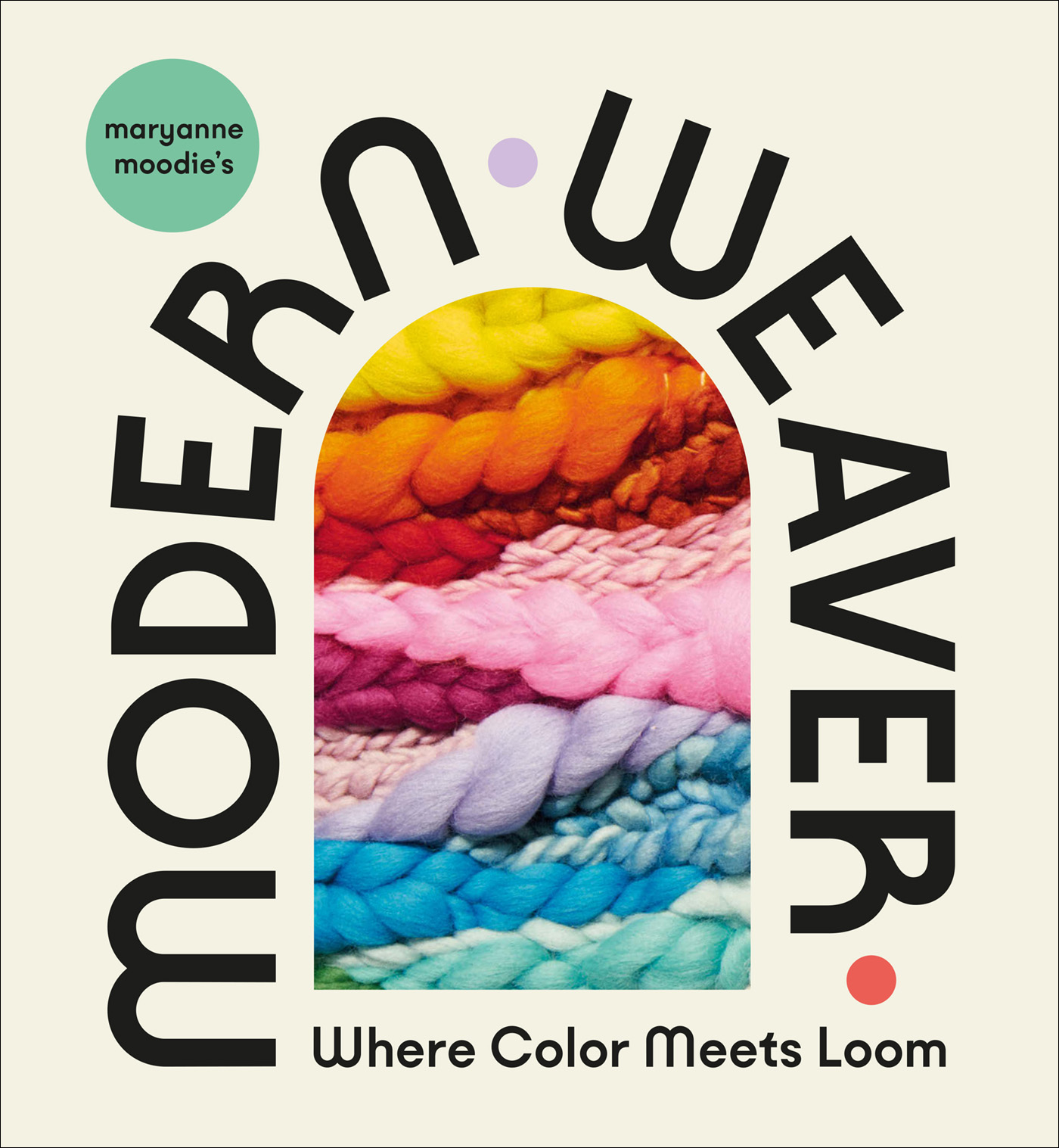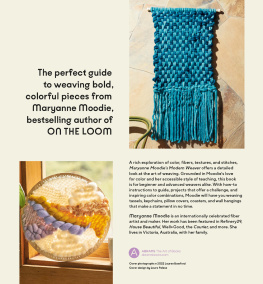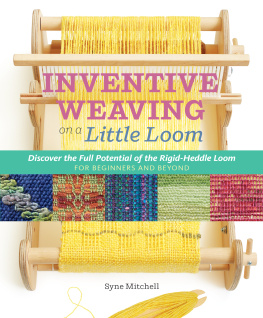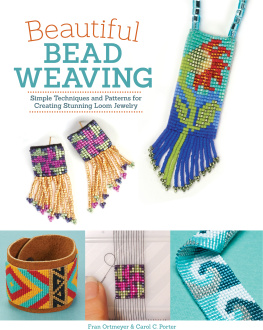Contents
Landmarks
Page List




CONTENTS
introduction
This book has been nearly two decades in the making. I began my journey as a schoolteacher twenty years ago and then moved on to weaving and teaching weaving. I loved being a teacher, and I learned so much from my studentshow to assess a learner and help them on their journey, how to break down skills into manageable steps, and that there are many learning styles and ways to get to the end goal.
I have been a weaver for almost ten years. Most of my education has come from tapestry manuals, fiber art books, and even looking at original modern weavings from the 1970s. I have made many mistakes along the way, but have tried to use them as opportunities to learn more.
This book brings together those twenty years of experience. I have distilled all of my trial and error into a collection of tips and tricks for weavers of all levels.
The collection of projects is divided for beginners, intermediate weavers, and those more advanced in their skills, but was created with the hope that there are projects to interest and challenge weavers of all backgrounds.
In this book, I want to take you from the firm foundations in tools and loom creating to choosing fibers, finding inspiration, and distilling it into a design. This journey can be daunting and exasperating, but I have created a thoughtful process that scaffolds weavers along the way.
Each of my projects is underpinned with a basis in color. I have always had quite a strong relationship with color, and I love experimenting with it. I know that many people do not share this confidence, but in this book you will find all the secrets to creating bold color choices and breaking out of your safe zone.
Most of the materials and tools you need are available to purchase through my website, ).
beginner projects
I teach in-person weaving classes at all levels and also have online courses on my website. The most popular by far are the weavers basics courses. I love being the gateway for the weaving-curious. The basics are quite simple, and a person who is new to weaving can produce amazing results with a few simple skills. The first few projects in this book are aimed at those of you who are new to weaving: They are here to help you nail down the basics and give you confidence to move forward on your weaving journey.
intermediate projects
Many people are able to grasp the basics of weaving in a few hours. Once you have mastered the skills of tabby, rya, loops, and soumak, I encourage you to move forward and try some trickier projects. Perhaps youre coming to the book with these skills already mastered! In this section, well try some out-of-the-box skills, apply them to interesting and new homewares, and even utilize fiber sculpture.
advanced projects
This section is chock-full of projects that tickle my imagination. I have drawn extensively on my years of experience to create these advanced projects and hope you can not only learn some new skills but different ways to apply skills you already know. You will have seen some of these projects among my own work, and Ive come up with some never-before-seen projects that Im excited to share.

color
You could say Ive always had a love affair with color. My home and wardrobe are a riotous cacophony of bright hues, jewel tones, and pastels. Some people are drawn to a more simple palette; I am a sucker for a clashI love surrounding myself with bold combinations.
Growing up, I was told that I had a natural affinity for colorsa knack for knowing how to pair themand for a long time, I believed it. Then one day, during art class, I was introduced to the color wheel, a simple tool for understanding how colors can be mixed to create new ones. The primary colorsyellow, blue, and redcan be mixed together in different combinations to create the secondary colorsgreen, purple, and orange. These can be further mixed to create the tertiary colorsteal, violet, and amber. My mind began tingling with the possibilities. As a person who loves creativity and systems equally, the color wheel really floats my boat.
A color wheel shows you how colors relate to each other and visually demonstrates the relationship between primary, secondary, and tertiary colors. I started to use the color wheel to develop color schemes by drawing on color theory. Once I began to understand the basics of color theory, I could see how my natural flair for color choice was actually underpinned by the pillars of color theory. Its a simple tool that can help you choose color combinations that work well together.
There are four common types of color schemes derived from the color wheel: monochromatic, analogous, complementary (and split complementary), and triadic.
The monochromes are the most harmonious schemes of color theory. They are formed by using a variation of shades of one color. Tone-on-tone combinations use several shades (adding black) and tints (adding white) of a single hue for a subtle palette, e.g., pastel blue, sky blue, and navy. These colors work well together naturally because their color roots are similar. Monochromatic schemes are serene and calming. Light, pastel tones create a relaxed, delicate feel, whereas dark jewel tones can feel moody and dramatic. Mixing light and dark tones adds interest and a touch of energy.
Slightly more contrasting effects can be generated by using analogous shades. These are colors from the same family. They sit next to one another on the color wheel; neighboring hues work well in conjunction with each other because they share the same base colors. You can choose three warm tonessuch as amber, gold, and rustto form an analogous color scheme.
Sometimes I get my inspiration from nature. After a walk once in the early spring, I noticed the eucalyptus blossoming. I came back and created an artwork using olive green and light blush pink. When I pulled out my color wheel, I realized that the reason this color combination popped so much was that it fit into the complementary scheme of color theory. Complementary colorssuch as blue and orange, red and green, or purple and yellowcan be found on opposite sides of the color wheel. Used together, these colors appear brighter, with added pop! Complementary colors are guaranteed to add energy to your weave.
Colors that are not in the same color family or that arent exactly harmonious can also work well together. By using a bold or deep color from one area of the color spectrum and pairing it with a lighter color from a different family, the overall impact can be quite striking. The key is to not let one color overtake the other and to keep the look balanced.
When I want a more delicate effect but with a bit of interest,











